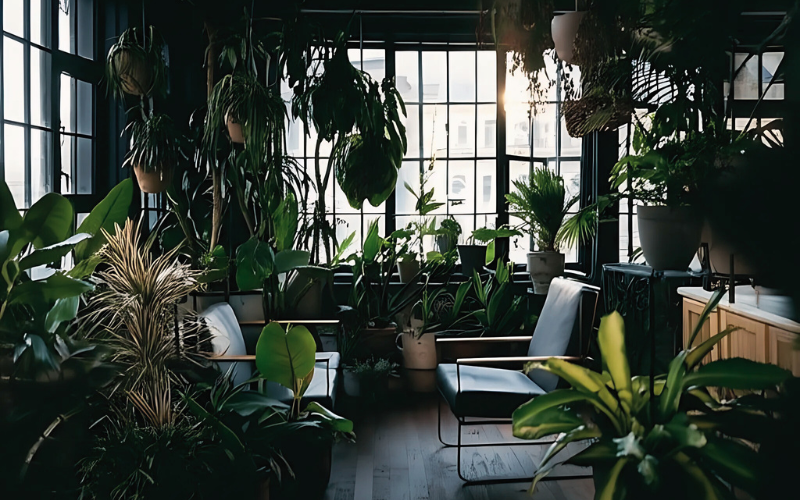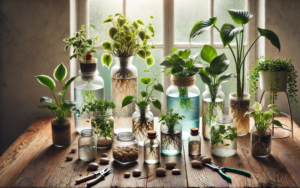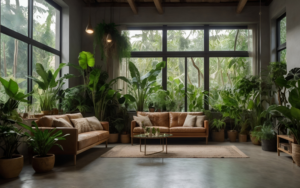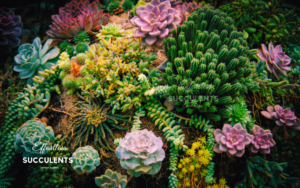Discover the 5 best indoor plants in Sweden that thrive during dark winters. Our guide to low-light, winter-proof houseplants includes care tips for Swedish homes, humidity solutions for dry air, and how these resilient plants complement Scandinavian decor while purifying your indoor environment.
Table of Contents
Why Your Swedish Home Needs These Green Allies
In Sweden, where winters cloak the sky in darkness by mid-afternoon and lagom (balance) is a way of life, indoor plants for Sweden residents embrace aren’t just décor—they’re lifelines. From Stockholm apartments to Gothenburg studios, Swedes are incorporating plants for dark winters that purify the air, boost moods, and elevate Scandinavian design with effortless elegance. Here’s why your Swedish home needs these green allies:
1. Combat “Winter Blues” with Air-Purifying Power
Sweden’s long, sun-starved winters can dampen spirits and indoor air quality. Enter air-purifying plants that Swedish homes benefit from, like the Snake Plant and Peace Lily. These botanical heroes filter toxins (formaldehyde from IKEA furniture, anyone?) and produce oxygen, turning your hem into a fresh Arctic breeze. A 2022 study by the IVL Swedish Environmental Research Institute found that indoor plants reduce stress hormones by 15%—essential for surviving vintermörker (winter darkness).
2. Survive Swedish Winters with Low-Light Champions
When daylight becomes a rare commodity, low-light indoor plants like the ZZ Plant and Swedish Ivy become invaluable allies. These resilient greens adapt beautifully to dim corners, north-facing windows, and even windowless bathrooms (we see you, Lund student dorms). Their evolutionary advantage? Many originate from tropical forest understories, making them experts at maximizing photosynthesis from minimal light. Learning how to care for plants in dark rooms becomes second nature to Swedish plant enthusiasts.
3. Scandinavian Design Meets Jungle Vibes
Swedish interiors are synonymous with Scandinavian minimalist decor, but even Nordic design craves organic warmth. Trailing plants like Swedish Ivy or sculptural Snake Plants add texture without compromising the clean aesthetic. Pair these winter-proof houseplants with muted ceramic pots (think: recycled Plantagen designs) for that perfect lagom balance of cozy and chic.
4. Humidity & Mold Control for Swedish Homes
Damp winters often lead to mold—a nightmare in rental apartments. Peace Lilies and Spider Plants act as natural dehumidifiers, absorbing excess moisture and spores. Understanding humidity hacks for dry air is crucial, as indoor heating can create desert-like conditions. These pet-safe indoor plants allow your katt (cat) to nap safely nearby while they work their air-purifying magic.
5. Eco-Friendly, Sustainable Living
Sweden’s passion for sustainability extends to plant care practices. Be mindful of overwatering risks in winter when plants naturally need less moisture. Opt for eco-friendly indoor gardening with peat-free soil (try Ängsmark) and upcycled planters. Even Trädgårdsföreningen (Swedish Horticultural Society) champions green practices for urban jungles, encouraging responsible care for your botanical roommates throughout the dark season.
By inviting these resilient green allies into your Swedish home, you’re not just decorating—you’re creating a living ecosystem that supports your well-being through the challenging Nordic winters.
Best recommended plants for dark Swedish winters
1. ZZ Plant (Zamioculcas zamiifolia)
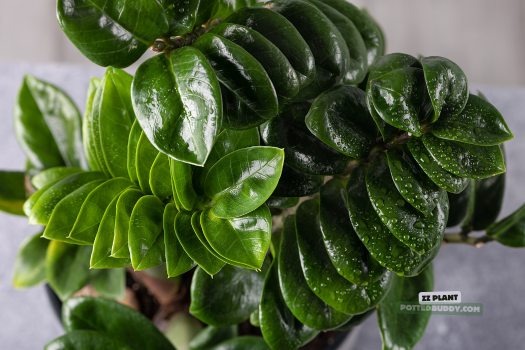
The ZZ Plant has gained tremendous popularity in Swedish homes because it epitomizes what makes a perfect winter-proof houseplant. With its glossy, dark green leaves, it brings tropical elegance to any room while requiring minimal care.
Why ZZ Plants Excel in Dark Swedish Homes:
- Thrives in extremely low-light conditions where other plants would deteriorate
- Stores water in thick rhizomes, making it resilient against the dry air common in heated Swedish apartments
- Rarely attracts pests, reducing maintenance concerns during winter months
- It can survive several weeks between waterings, helping avoid overwatering risks in winter when plants require less moisture
For optimal care in Sweden, maintain room temperatures between 18-24°C and position away from drafty windows or doors. Water only when the soil feels completely dry throughout—typically once every 3-4 weeks during winter. This approach prevents the root rot that commonly affects houseplants during darker months when evaporation slows considerably.
2. Snake Plant (Sansevieria trifasciata)

The Snake Plant, known locally as “svärmoderns tunga,” stands among the most robust air-purifying plants Swedish residents can cultivate. Its distinctive upright leaves with yellow or white variegation bring architectural interest to the Scandinavian minimalist decor while requiring almost no attention.
Why Snake Plants Thrive in Swedish Winter Conditions:
- Survives in dim corners and spaces far from windows—perfect for how to care for plants in dark rooms
- Extremely drought-tolerant, reducing concern about proper watering schedules
- Recognized by NASA as an excellent air purifier, converting CO₂ to oxygen even at night
- Available in various sizes to complement different spaces in Swedish homes
Place your Snake Plant in any area with indirect light, though it will tolerate even the darkest corners remarkably well. To avoid overwatering risks in winter, water only when the soil has been completely dry for several days—typically once every 4-6 weeks during winter months. Ensure good drainage to prevent root issues that can develop in cooler conditions.
3. Peace Lily (Spathiphyllum)
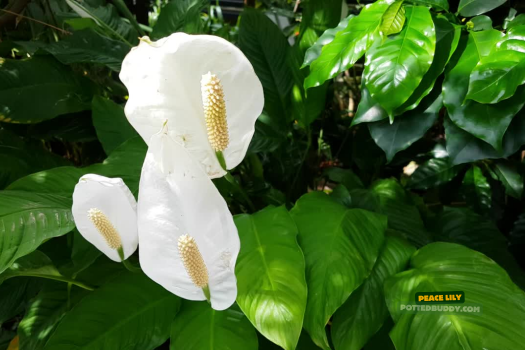
The elegant Peace Lily brings a touch of sophistication to Swedish interiors with its glossy dark foliage and distinctive white spathes. Unlike many flowering plants, the Peace Lily can produce its characteristic blooms even in the limited-light environments typical of Swedish winters.
Why Peace Lilies Work Beautifully in Swedish Settings:
- Thrives in low to medium light conditions without losing its ornamental appeal
- Functions as one of the best air-purifying plants that Swedish residents can grow indoors
- Removes common household toxins, including benzene and formaldehyde
- Communicates watering needs by drooping slightly, helping prevent both under and overwatering
Position your Peace Lily away from direct sunlight and cold drafts. Water when the top inch of soil feels dry, but reduce frequency significantly during winter months. Peace Lilies benefit from humidity hacks for dry air—consider grouping with other plants or placing on a pebble tray with water to increase moisture levels without risking overwatering.
4. Pothos (Epipremnum aureum)
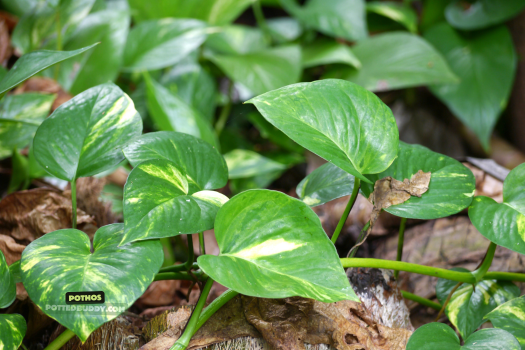
Pothos, sometimes referred to as “Devil’s Ivy” or “djävulens murgröna” in Swedish, has become a staple in Scandinavian minimalist decor due to its adaptability and attractive trailing growth habit. Its heart-shaped leaves in various patterns add visual interest to shelves and hanging planters even during the darkest months.
Why Pothos Succeeds as a Winter-Proof Houseplant:
- Extremely adaptable to low-light environments, typical in Swedish homes
- Continues growing visibly even during dark winters, providing psychological benefits
- Available in various varieties, including Golden, Marble Queen, and Neon, to complement different interior styles
- Safe for homes with most pets, making it one of the more versatile pet-safe indoor plants
For best results, place your Pothos in bright, indirect light, though it will adapt to lower light conditions admirably. Water when the top 2-3 centimeters of soil feels dry—typically every 10-14 days during winter. Implement humidity hacks for dry air by occasionally misting the leaves or grouping them with other plants to create a microclimate that better resembles their natural environment.
5. Chinese Evergreen (Aglaonema)

The Chinese Evergreen has gained popularity in Swedish homes for its striking foliage patterns and exceptional tolerance for challenging winter conditions. Available in various colors and patterns, these plants add visual interest to Scandinavian interiors year-round.
Why Chinese Evergreens Are Perfect Low-Light Indoor Plants for Sweden:
- Among the most shade-tolerant houseplants available on the Swedish market
- Varieties with darker leaves require even less light than those with variegation
- Adds color through distinctive foliage rather than relying on light-dependent blooms
- Adapts well to consistent indoor temperatures maintained in Swedish homes
Position your Chinese Evergreen in a location with filtered light, away from direct sun and cold drafts. Water when the top inch of soil feels dry, and reduce watering frequency significantly during winter months to prevent root issues. These plants appreciate higher humidity but adapt well to average home conditions—consider using a room humidifier during particularly dry periods as one of your humidity hacks for dry air.
Creating a Thriving Indoor Garden Through Swedish Winters
Combining these five indoor plants that Swedish residents can reliably grow creates a diverse and resilient indoor garden that will flourish despite challenging winter conditions. Consider these additional tips for maintaining healthy plants during the darkest months:
Understanding how to care for plants in dark rooms becomes essential during Swedish winters. Rotate plants quarterly to ensure even growth, and clean leaves regularly to maximize light absorption. Consider supplementing with grow lights during the darkest periods if your plants show signs of light deprivation such as leggy growth or diminished coloration.
Adjust your watering routine to address overwatering risks in winter. Most plants require significantly less water during winter months when growth slows and evaporation decreases. Always check soil moisture before watering rather than following a fixed schedule.
Group plants together to create humidity microclimates that combat the dry air from heating systems. This natural approach to increasing humidity benefits all your plants while enhancing their visual impact in your Scandinavian minimalist decor.
By selecting these resilient, winter-proof houseplants and understanding their basic care requirements, you can maintain a vibrant connection to nature throughout Sweden’s long winter months. These plants not only survive the challenging conditions but actively improve your indoor environment by purifying the air and enhancing well-being during the darker seasons when Swedes spend most of their time indoors.

